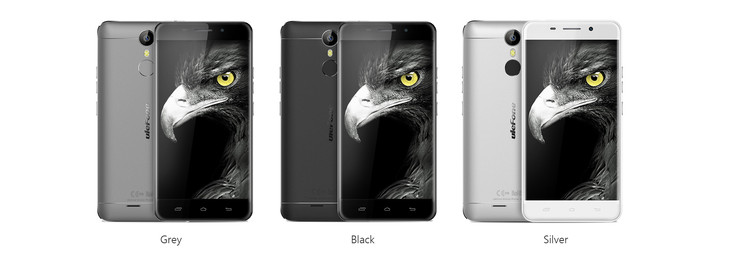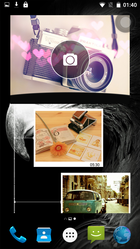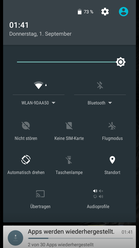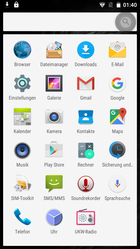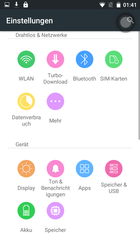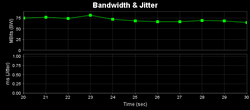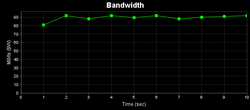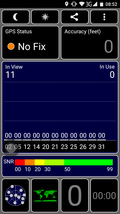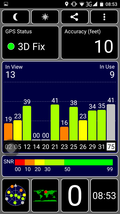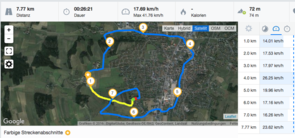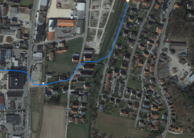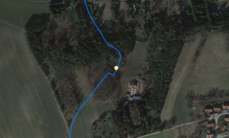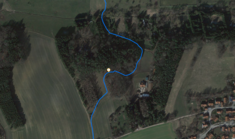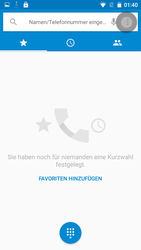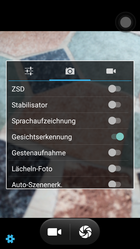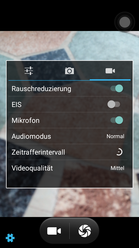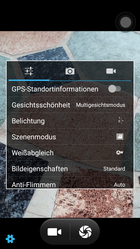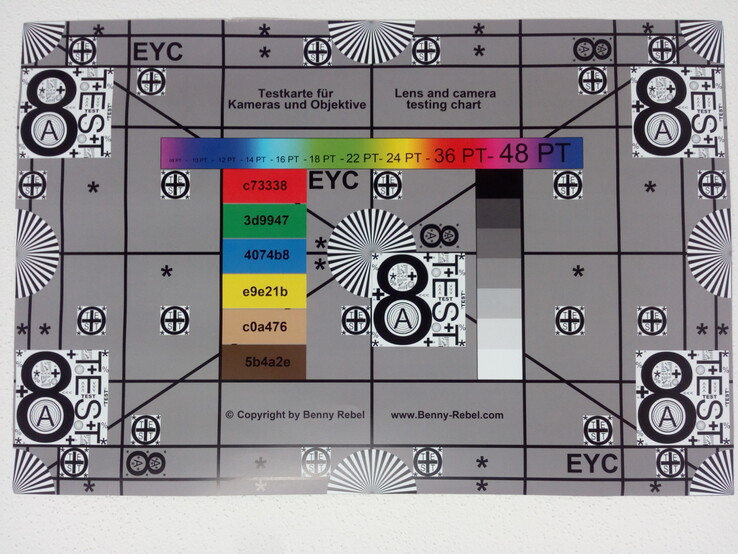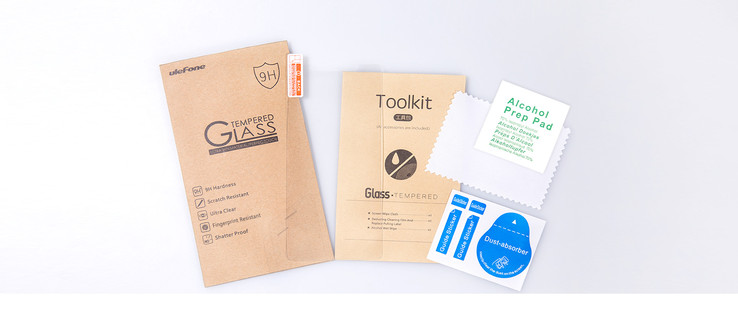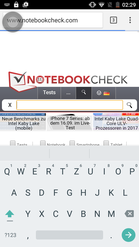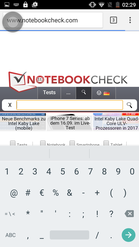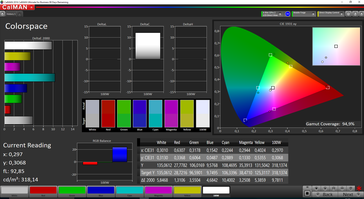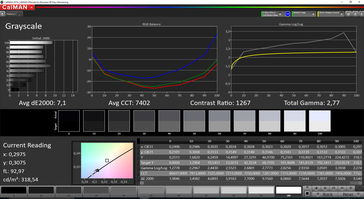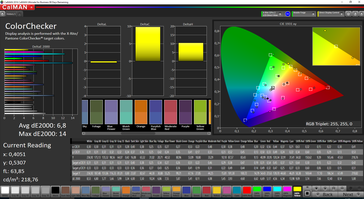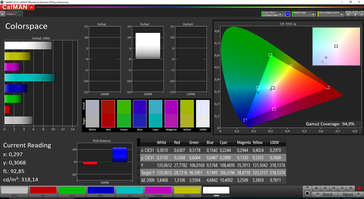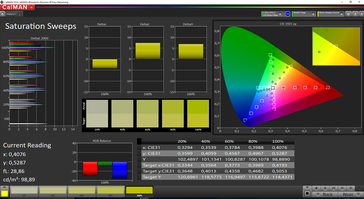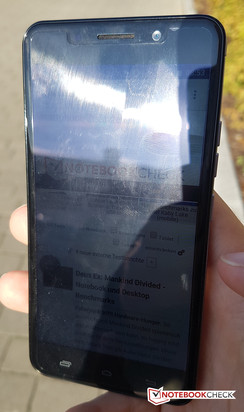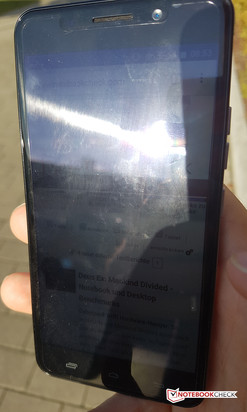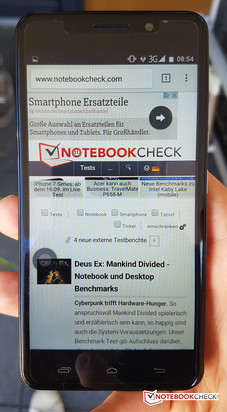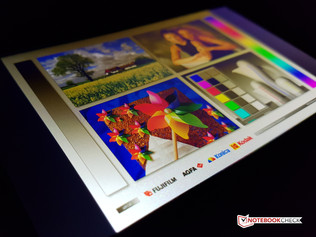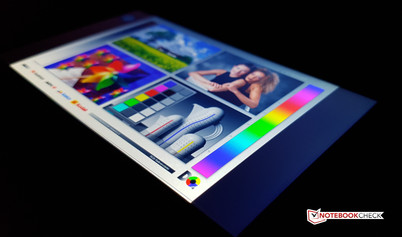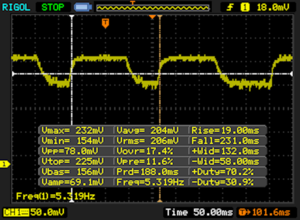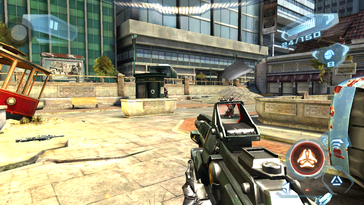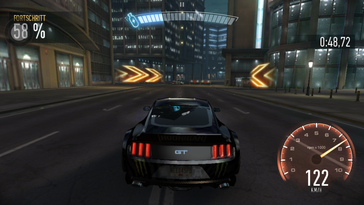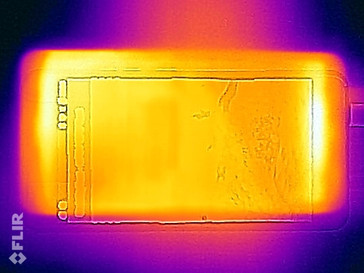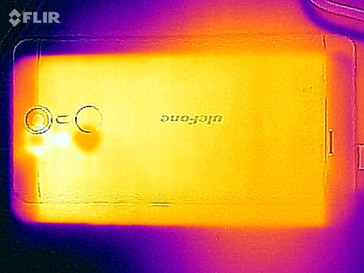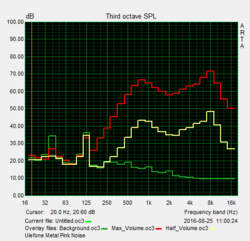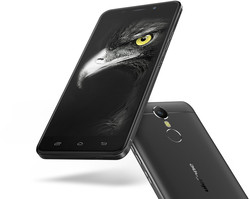UleFone Metal Smartphone Review
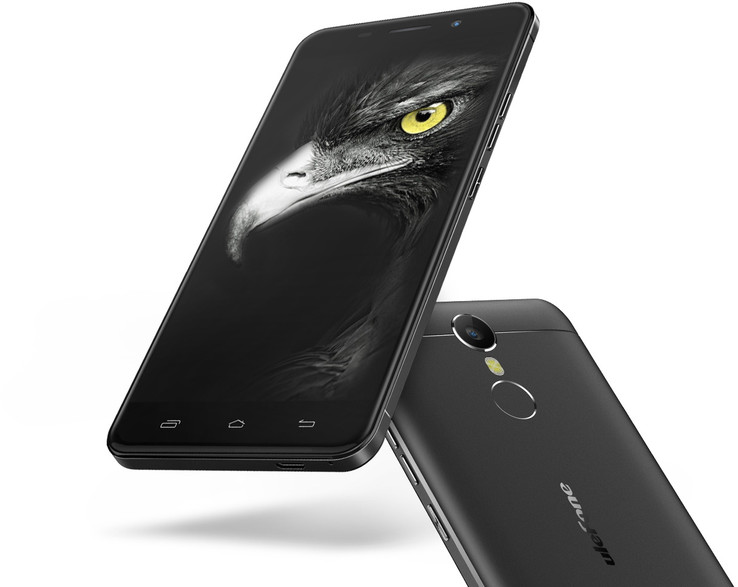
For the original German review, see here.
A phone like the UleFone Metal would have been classified as a middle- or top-class device a little while ago: metal case, octa-core CPU, 3 GB RAM, 16 GB internal memory (can be increased), fingerprint sensor, dual SIM functionality and a rounded IPS HD display protected by Corning Gorilla glass. Nowadays, there are many "China smartphones" available with such features for roughly 100 Euros (~$111, including delivery).
The UleFone Metal can be acquired from importers and is available in gray, silver and black. The competition includes cheap devices with similar hardware strength, such as the UHANS S1 and the UMi Touch. We also include cheap phones with relatively weaker hardware, such as the Wiko Lenny 3, the Archos 50e Neon, the TP-Link Neffos C5 and the Coolpad Porto S.
Case
The UleFone Metal looks and feels great for its price. The rounded edges of the smartphone allow it to sit comfortably in the hand, despite its thickness of 9 mm. Like other metal phones, the test model uses synthetic material at the top and bottom of the case to allow the antennas to work without issues. There are definite gaps between the materials, but they have been kept even. The volume control and on/off buttons are seated firmly and offer clear pressure points.
The front of the Ulefone Metal sports a single pane of Corning Gorilla Glass 3, which curves gently into the wide, black metal borders, which frame the IPS display. The top and bottom borders on the front are quite large, which results in a relatively low display-to-case ratio of 67.9%.
The workmanship and sturdiness of the case are quite good. Nothing bends or twists at high levels of pressure (no creaking noises).
Connectivity
The internal eMMC memory measures 16 GB, but only around 11.79 GB of the total storage space is free for use. If you are willing to give up the Dual SIM functionality of the smartphone, you can insert a microSD card into the hybrid slot and increase the storage space by up to 128 GB. The manufacturer has enabled the moving of apps to external memory cards (App2SD functionality).
The UleFone Metal is also equipped with a fingerprint sensor, USB OTG and a UKW radio. There is no LED for notifications. The phone supports wireless transmission to external monitors via Miracast. This feature worked well in our test with a Sony Android TV.
Software
This entry-level smartphone is packed with Android 6.0 "Marshmallow". At the time of our testing, the device had received the security patch from May 2016. In comparison to Vanilla Android, the manufacturer has not changed the user interface much. The settings menu is the only feature which shows major tweaks.
Communication and GPS
The device offers Bluetooth 4.0 for wireless communication. The integrated WLAN module supports the b/g/n IEEE-802.11 standards and operates at 2.4 GHz. The range and signal quality of the module are good. The Wi-Fi transfer speed between the smartphone and our reference router, the AVM Fritzbox 6490, measures 88 Mb/s (Iperf Server) and 73 Mb/s (Iperf Client), which puts our test model one level above other entry-level devices. These speeds remained constant during our test.
The Dual SIM smartphone has two slots for a Nano SIM and a Micro SIM card. In contrast to manufacturer specifications, our test model only had one LTE-ready slot (both should be compatible). The other slot was limited to the 2G network. The smartphone supports Quadband-GSM, Triband-UMTS and LTE at 800, 900, 1,800, 2,100 and 2,600 MHz frequencies. Although the UleFone Metal is not planned for the German market, it is guaranteed to be compatible with the LTE-band 20. However, the range of covered frequencies remains limited.
| Networking | |
| iperf Server (receive) TCP 1 m | |
| Samsung Galaxy S7 Edge | |
| Ulefone Metal | |
| TP-Link Neffos C5 | |
| Wiko Lenny 3 | |
| Archos 50e Neon | |
| UHANS S1 | |
| iperf Client (transmit) TCP 1 m | |
| Samsung Galaxy S7 Edge | |
| Ulefone Metal | |
| UHANS S1 | |
| TP-Link Neffos C5 | |
| Wiko Lenny 3 | |
| Archos 50e Neon | |
The phone uses GPS satellites to calculate its position. This features works reliably and quickly outdoors (up to 3 meters accuracy). To determine the accuracy of our test model, we took it for a ride alongside our bicycle GPS, the Garmin Edge 500. A ride of 8 kilometers showed deviations between the two devices of 310 meters. This is quite poor, as other devices, such as the UMi Touch, can offer much better accuracy (deviation: 150 meters).
Telephone Features and Speech Quality
Cameras
The main camera of the UleFone Metal is a Sony IMX 149 sensor placed on the back of the device. This sensor offers 8 MP and supports picture interpolation up to 13 MP. In our sharpness test (test chart photo in pre-determined lighting), the recordings appeared detailed, but were a little blurry at the edges. Brightly-lit objects are captured very well. The dynamic range is appropriate for this price segment. However, due to a lack of OIS, pictures often suffer from poor clarity. Recordings also show clear color tinges (Scene 1: fruit bowl, blue tinge). In low light conditions, the sensor can only offer blurred pictures.
Pictures taken with the 2 MP front camera can also be scaled up to 5 MP. These offer decent quality and suffice for selfies. The main camera records videos at the FHD resolution (1920x1080 pixels) up to 30 frames per second.
Accessories and Warranty
Input Devices
The capacitive multi-touchscreen reacts reliably to the finger. The Google virtual keyboard is available for text input.
The UleFone Metal can be controlled using the three capacitive buttons below the display. In contrast to standard Android, the order of these keys is reversed. This formation is familiar from Samsung devices (back on the right, multitasking on the left). These buttons do not have a backlight.
The device is unlocked using the on/off key or the "double tap to wake" gesture on the screen. The device can also be activated using the fingerprint sensor on the back. The speed and the recognition efficiency of the sensor have room for improvement.
Display
Like the rest of the entry-level 5-inch competition, the LC display of the UleFone Metal offers a resolution of 1280x720 pixels. Content is displayed on the 12.7 cm IPS panel (pixel density: 294 PPI) very clearly.
The LED backlight of our test model has a max brightness of 338 cd/m², but usually the device is around 315 cd/m². Competitors, like the UHANS S1 or the TP-Link Neffos C5, are much brighter. The ambient light sensor should be turned off as it drops the brightness down to 251 cd/m². The realistic APL50 test (Average Picture Level) with evenly distributed bright and dark regions measures a max brightness of 309 cd/m² in the middle of the screen.
| |||||||||||||||||||||||||
Brightness Distribution: 87 %
Center on Battery: 312 cd/m²
Contrast: 557:1 (Black: 0.56 cd/m²)
ΔE Color 6.8 | 0.5-29.43 Ø5
ΔE Greyscale 7.1 | 0.57-98 Ø5.3
Gamma: 2.77
| Ulefone Metal IPS, 1280x720, 5.00 | Archos 50e Neon TFT, 854x480, 5.00 | Coolpad Porto S IPS, 1280x720, 5.00 | Wiko Lenny 3 IPS, 1280x720, 5.00 | UHANS S1 IPS, 1280x720, 5.00 | TP-Link Neffos C5 IPS, 1280x720, 5.00 | UMI Touch IPS, 1920x1080, 5.50 | Samsung Galaxy S7 Edge Super AMOLED, 2560x1440, 5.50 | |
|---|---|---|---|---|---|---|---|---|
| Screen | -16% | 6% | 15% | -8% | 23% | 18% | 66% | |
| Brightness middle | 312 | 443 42% | 407 30% | 374 20% | 525 68% | 508 63% | 424 36% | 554 78% |
| Brightness | 315 | 430 37% | 403 28% | 343 9% | 471 50% | 491 56% | 415 32% | 552 75% |
| Brightness Distribution | 87 | 94 8% | 92 6% | 85 -2% | 82 -6% | 89 2% | 91 5% | 96 10% |
| Black Level * | 0.56 | 0.38 32% | 0.5 11% | 0.47 16% | 0.92 -64% | 0.58 -4% | 0.54 4% | |
| Contrast | 557 | 1166 109% | 814 46% | 796 43% | 571 3% | 876 57% | 785 41% | |
| Colorchecker dE 2000 * | 6.8 | 13.9 -104% | 7.9 -16% | 6 12% | 8.6 -26% | 7 -3% | 6.9 -1% | 1.59 77% |
| Colorchecker dE 2000 max. * | 14 | 29.5 -111% | 18.2 -30% | 11.9 15% | 19.4 -39% | 14.1 -1% | 10.9 22% | 2.56 82% |
| Greyscale dE 2000 * | 7.1 | 17.3 -144% | 8.9 -25% | 6.7 6% | 10.6 -49% | 6.1 14% | 6.8 4% | 2.01 72% |
| Gamma | 2.77 79% | 2.93 75% | 2.46 89% | 2.19 100% | 2.34 94% | 2.15 102% | 1.99 111% | 2.01 109% |
| CCT | 7402 88% | 22878 28% | 8332 78% | 8073 81% | 9487 69% | 8068 81% | 8131 80% | 6321 103% |
| Color Space (Percent of AdobeRGB 1998) | 82.12 | |||||||
| Color Space (Percent of sRGB) | 99.98 |
* ... smaller is better
The brightness and black value of 0.56 cd/m² (APL50: 0.55 cd/m²) combine to provide a modest contrast of 1:557. Analysis with a photo spectrometer and the CalMAN software shows that the entry-level smartphone has small deviations in color (6.8) and gray levels (7.1) with the optimal range being smaller than 3. The measured color temperature of 7,402 Kelvin is a little too cool, but neither the gray levels nor the blue tinge are noticeable in everyday use.
The viewing angles of the panel are really good. Even at extreme viewing angles, the content is only affected by slight color deviations. Outdoors, the device offers limited use as the LC display is not bright enough. In everyday use, the max brightness (without ambient light sensor) is good enough.
Display Response Times
| ↔ Response Time Black to White | ||
|---|---|---|
| 28 ms ... rise ↗ and fall ↘ combined | ↗ 11 ms rise | |
| ↘ 17 ms fall | ||
| The screen shows relatively slow response rates in our tests and may be too slow for gamers. In comparison, all tested devices range from 0.1 (minimum) to 240 (maximum) ms. » 67 % of all devices are better. This means that the measured response time is worse than the average of all tested devices (21.5 ms). | ||
| ↔ Response Time 50% Grey to 80% Grey | ||
| 250 ms ... rise ↗ and fall ↘ combined | ↗ 19 ms rise | |
| ↘ 231 ms fall | ||
| The screen shows slow response rates in our tests and will be unsatisfactory for gamers. In comparison, all tested devices range from 0.2 (minimum) to 636 (maximum) ms. » 100 % of all devices are better. This means that the measured response time is worse than the average of all tested devices (33.7 ms). | ||
Screen Flickering / PWM (Pulse-Width Modulation)
| Screen flickering / PWM not detected | |||
In comparison: 53 % of all tested devices do not use PWM to dim the display. If PWM was detected, an average of 17900 (minimum: 5 - maximum: 3846000) Hz was measured. | |||
Performance
The UleFone Metal uses the MediaTek MT6753. This ARM-SoC (System-on-a-Chip) has a 28 nm finish and offers 8 64-bit CPU cores (Cortex A53 architecture). The Mali-T720 MP4 provides graphics output and supports modern standards, such as OpenGL ES 3.1.
As expected, the MT6753 of our test model dominated the MediaTek SoCs (MT6580M, MT6735) in the competitors. The test model leads the benchmarks alongside the UMI Touch and the UHANS S1. The combination of the octa-core SoC and 3 GB DDR3-RAM ensures strong system and browser performance. Applications are quickly opened and closed. The internal eMMC memory offers good transfer rates, as is reflected by the Work-Performance score of the PCMark benchmarks. These benchmarks measure the performance potential of system components - the test model scores 4,079 points.
The integrated microSD card slot is also fast. The performance was tested using the reference memory card Toshiba Exceria Pro M401 (max. read 95 MB/s, write 80 MB/s). At 50 MB/s (read) and 28 MB/s (write), the performance of the SD-card slot is very good for this price segment.
| AnTuTu v6 - Total Score (sort by value) | |
| Ulefone Metal | |
| Archos 50e Neon | |
| Coolpad Porto S | |
| Wiko Lenny 3 | |
| UHANS S1 | |
| TP-Link Neffos C5 | |
| UMI Touch | |
| Samsung Galaxy S7 Edge | |
| 3DMark | |
| 1280x720 offscreen Ice Storm Unlimited Score (sort by value) | |
| Ulefone Metal | |
| Archos 50e Neon | |
| Coolpad Porto S | |
| Wiko Lenny 3 | |
| UHANS S1 | |
| TP-Link Neffos C5 | |
| UMI Touch | |
| Samsung Galaxy S7 Edge | |
| 1280x720 offscreen Ice Storm Unlimited Graphics Score (sort by value) | |
| Ulefone Metal | |
| Archos 50e Neon | |
| Coolpad Porto S | |
| Wiko Lenny 3 | |
| UHANS S1 | |
| TP-Link Neffos C5 | |
| UMI Touch | |
| Samsung Galaxy S7 Edge | |
| 1280x720 offscreen Ice Storm Unlimited Physics (sort by value) | |
| Ulefone Metal | |
| Archos 50e Neon | |
| Coolpad Porto S | |
| Wiko Lenny 3 | |
| UHANS S1 | |
| TP-Link Neffos C5 | |
| UMI Touch | |
| Samsung Galaxy S7 Edge | |
| 2560x1440 Sling Shot OpenGL ES 3.0 (sort by value) | |
| Ulefone Metal | |
| Wiko Lenny 3 | |
| UHANS S1 | |
| TP-Link Neffos C5 | |
| UMI Touch | |
| Samsung Galaxy S7 Edge | |
| 2560x1440 Sling Shot OpenGL ES 3.0 Graphics (sort by value) | |
| Ulefone Metal | |
| Wiko Lenny 3 | |
| UHANS S1 | |
| TP-Link Neffos C5 | |
| UMI Touch | |
| Samsung Galaxy S7 Edge | |
| 2560x1440 Sling Shot OpenGL ES 3.0 Physics (sort by value) | |
| Ulefone Metal | |
| Wiko Lenny 3 | |
| UHANS S1 | |
| TP-Link Neffos C5 | |
| UMI Touch | |
| Samsung Galaxy S7 Edge | |
| GFXBench (DX / GLBenchmark) 2.7 | |
| T-Rex Onscreen (sort by value) | |
| Ulefone Metal | |
| Archos 50e Neon | |
| Coolpad Porto S | |
| Wiko Lenny 3 | |
| TP-Link Neffos C5 | |
| UMI Touch | |
| Samsung Galaxy S7 Edge | |
| 1920x1080 T-Rex Offscreen (sort by value) | |
| Ulefone Metal | |
| Archos 50e Neon | |
| Coolpad Porto S | |
| Wiko Lenny 3 | |
| TP-Link Neffos C5 | |
| UMI Touch | |
| Samsung Galaxy S7 Edge | |
| GFXBench 3.0 | |
| on screen Manhattan Onscreen OGL (sort by value) | |
| Ulefone Metal | |
| Coolpad Porto S | |
| Wiko Lenny 3 | |
| TP-Link Neffos C5 | |
| UMI Touch | |
| Samsung Galaxy S7 Edge | |
| 1920x1080 1080p Manhattan Offscreen (sort by value) | |
| Ulefone Metal | |
| Coolpad Porto S | |
| Wiko Lenny 3 | |
| TP-Link Neffos C5 | |
| UMI Touch | |
| Samsung Galaxy S7 Edge | |
| GFXBench 3.1 | |
| on screen Manhattan ES 3.1 Onscreen (sort by value) | |
| Ulefone Metal | |
| Wiko Lenny 3 | |
| UMI Touch | |
| Samsung Galaxy S7 Edge | |
| 1920x1080 Manhattan ES 3.1 Offscreen (sort by value) | |
| Ulefone Metal | |
| Wiko Lenny 3 | |
| UMI Touch | |
| Samsung Galaxy S7 Edge | |
| PCMark for Android - Work performance score (sort by value) | |
| Ulefone Metal | |
| Archos 50e Neon | |
| Coolpad Porto S | |
| Wiko Lenny 3 | |
| UHANS S1 | |
| TP-Link Neffos C5 | |
| UMI Touch | |
| Samsung Galaxy S7 Edge | |
| Mozilla Kraken 1.1 - Total (sort by value) | |
| Ulefone Metal | |
| Archos 50e Neon | |
| Coolpad Porto S | |
| Wiko Lenny 3 | |
| UHANS S1 | |
| TP-Link Neffos C5 | |
| UMI Touch | |
| Samsung Galaxy S7 Edge | |
| JetStream 1.1 - Total Score (sort by value) | |
| Ulefone Metal | |
| Archos 50e Neon | |
| Coolpad Porto S | |
| Wiko Lenny 3 | |
| UHANS S1 | |
| TP-Link Neffos C5 | |
| UMI Touch | |
| Samsung Galaxy S7 Edge | |
| Octane V2 - Total Score (sort by value) | |
| Ulefone Metal | |
| Archos 50e Neon | |
| Coolpad Porto S | |
| Wiko Lenny 3 | |
| UHANS S1 | |
| TP-Link Neffos C5 | |
| UMI Touch | |
| Samsung Galaxy S7 Edge | |
* ... smaller is better
Games
The integrated GPU of the MediaTek MT6753 is the Mali-T720 MP4. This GPU offers 4 clusters, which can run at up to 600 MHz. Games from Android Play Store, such as N.O.V.A. 3 or Need for Speed No Limits, run without issues on the Mali GPU.
Emissions
Temperature
The temperature emissions of the UleFone Metal are relatively balanced. While idle, the entry-level smartphone barely heats up on the back. We measured an even distribution of heat with a max temperature of 31.8 °C. Even at load, the back heats up to a max of 37.5 °C, which is acceptable. In everyday use, the temperature emissions are comfortable.
(±) The maximum temperature on the upper side is 40.7 °C / 105 F, compared to the average of 35 °C / 95 F, ranging from 21.9 to 56 °C for the class Smartphone.
(+) The bottom heats up to a maximum of 37.5 °C / 100 F, compared to the average of 33.8 °C / 93 F
(±) In idle usage, the average temperature for the upper side is 33 °C / 91 F, compared to the device average of 32.7 °C / 91 F.
Speakers
The mono speaker on the back of the device can reach a max volume of 76 dB(A). This puts our test model behind other competitors, which offer an average volume of 85 dB(A). The sound quality is at a very high level for the price of the smartphone. The sound output is not very linear as the middle to high notes range from 500 Hz to 8 kHz. Bass is not noticeable.
Ulefone Metal audio analysis
(±) | speaker loudness is average but good (76.4 dB)
Bass 100 - 315 Hz
(-) | nearly no bass - on average 25.6% lower than median
(-) | bass is not linear (15.5% delta to prev. frequency)
Mids 400 - 2000 Hz
(+) | balanced mids - only 3.7% away from median
(±) | linearity of mids is average (8.2% delta to prev. frequency)
Highs 2 - 16 kHz
(±) | higher highs - on average 5.6% higher than median
(+) | highs are linear (6.5% delta to prev. frequency)
Overall 100 - 16.000 Hz
(±) | linearity of overall sound is average (24.4% difference to median)
Compared to same class
» 52% of all tested devices in this class were better, 8% similar, 40% worse
» The best had a delta of 12%, average was 38%, worst was 134%
Compared to all devices tested
» 70% of all tested devices were better, 6% similar, 24% worse
» The best had a delta of 4%, average was 25%, worst was 134%
Archos 50e Neon audio analysis
(+) | speakers can play relatively loud (85.5 dB)
Bass 100 - 315 Hz
(-) | nearly no bass - on average 43.8% lower than median
(+) | bass is linear (6.1% delta to prev. frequency)
Mids 400 - 2000 Hz
(±) | reduced mids - on average 8.4% lower than median
(±) | linearity of mids is average (10.4% delta to prev. frequency)
Highs 2 - 16 kHz
(+) | balanced highs - only 2.6% away from median
(+) | highs are linear (3% delta to prev. frequency)
Overall 100 - 16.000 Hz
(-) | overall sound is not linear (30% difference to median)
Compared to same class
» 74% of all tested devices in this class were better, 4% similar, 21% worse
» The best had a delta of 12%, average was 38%, worst was 134%
Compared to all devices tested
» 86% of all tested devices were better, 3% similar, 11% worse
» The best had a delta of 4%, average was 25%, worst was 134%
UHANS S1 audio analysis
(+) | speakers can play relatively loud (84.8 dB)
Bass 100 - 315 Hz
(-) | nearly no bass - on average 37.7% lower than median
(+) | bass is linear (6.2% delta to prev. frequency)
Mids 400 - 2000 Hz
(±) | higher mids - on average 7.8% higher than median
(±) | linearity of mids is average (11.9% delta to prev. frequency)
Highs 2 - 16 kHz
(±) | higher highs - on average 9.4% higher than median
(+) | highs are linear (6.6% delta to prev. frequency)
Overall 100 - 16.000 Hz
(-) | overall sound is not linear (35.7% difference to median)
Compared to same class
» 82% of all tested devices in this class were better, 1% similar, 17% worse
» The best had a delta of 12%, average was 38%, worst was 134%
Compared to all devices tested
» 92% of all tested devices were better, 1% similar, 7% worse
» The best had a delta of 4%, average was 25%, worst was 134%
Coolpad Porto S audio analysis
(+) | speakers can play relatively loud (84.9 dB)
Bass 100 - 315 Hz
(-) | nearly no bass - on average 37.1% lower than median
(±) | linearity of bass is average (9.4% delta to prev. frequency)
Mids 400 - 2000 Hz
(±) | reduced mids - on average 5.2% lower than median
(±) | linearity of mids is average (8% delta to prev. frequency)
Highs 2 - 16 kHz
(+) | balanced highs - only 2.4% away from median
(+) | highs are linear (3.8% delta to prev. frequency)
Overall 100 - 16.000 Hz
(±) | linearity of overall sound is average (25% difference to median)
Compared to same class
» 55% of all tested devices in this class were better, 7% similar, 37% worse
» The best had a delta of 12%, average was 38%, worst was 134%
Compared to all devices tested
» 73% of all tested devices were better, 6% similar, 22% worse
» The best had a delta of 4%, average was 25%, worst was 134%
Energy Management
Power Consumption
The UleFone Metal is not very power efficient. For a 5-inch smartphone, it consumes a lot. Even a 5.5-inch device, like the UMi Touch (same SoC), has a 25% less power consumption.
| Off / Standby | |
| Idle | |
| Load |
|
| Ulefone Metal 3050 mAh | Archos 50e Neon 2200 mAh | Coolpad Porto S 2000 mAh | Wiko Lenny 3 2000 mAh | UHANS S1 2200 mAh | TP-Link Neffos C5 2200 mAh | UMI Touch 4000 mAh | Samsung Galaxy S7 Edge 3600 mAh | |
|---|---|---|---|---|---|---|---|---|
| Power Consumption | 31% | 26% | 22% | 40% | 19% | 25% | 29% | |
| Idle Minimum * | 1.41 | 0.56 60% | 1.16 18% | 0.76 46% | 0.7 50% | 0.72 49% | 0.89 37% | 0.63 55% |
| Idle Average * | 2.46 | 1.58 36% | 2.21 10% | 2.16 12% | 1.13 54% | 1.87 24% | 2 19% | 1.1 55% |
| Idle Maximum * | 2.83 | 1.8 36% | 2.24 21% | 2.35 17% | 1.25 56% | 2 29% | 2.1 26% | 1.56 45% |
| Load Average * | 5.15 | 5.22 -1% | 3.34 35% | 4.65 10% | 4.39 15% | 5.99 -16% | 3.87 25% | 5.95 -16% |
| Load Maximum * | 7.05 | 5.34 24% | 3.95 44% | 5.35 24% | 5.43 23% | 6.45 9% | 5.79 18% | 6.7 5% |
* ... smaller is better
Battery Life
Due to the high power consumption of the phone while idle and at load, the device lasts a mere 6 hours and 52 minutes in our practical WLAN test. For this test, the brightness is set to 150 cd/m². The only competitor which performs worse is the UHANS S1. For a 5-inch smartphone with a 3,050 mAh battery, this is really disappointing.
| Ulefone Metal 3050 mAh | Archos 50e Neon 2200 mAh | Coolpad Porto S 2000 mAh | Wiko Lenny 3 2000 mAh | UHANS S1 2200 mAh | TP-Link Neffos C5 2200 mAh | UMI Touch 4000 mAh | Samsung Galaxy S7 Edge 3600 mAh | |
|---|---|---|---|---|---|---|---|---|
| Battery Runtime | ||||||||
| WiFi v1.3 | 403 | 498 24% | 504 25% | 549 36% | 309 -23% | 453 12% | 553 37% | 732 82% |
Pros
Cons
Verdict
UleFone has created a cheap yet successful device. The success of the test model can be accredited to its pricing and technical features. The workmanship and system performance are also quite good for an entry-level device.
The largest flaw of the UleFone Metal is the quality of the LCD panel. This IPS panel is too dark and offers low contrast in comparison to the competition. Furthermore, the power consumption is too high for a 5-inch device, which results in modest battery life.
Despite lacking in display and battery life, the UleFone Metal is an interesting entry-level smartphone which is worth the investment of around 100 Euros (~$111).
Ulefone Metal
-
09/23/2016 v5.1(old)
Marcus Herbrich


 Deutsch
Deutsch English
English Español
Español Français
Français Italiano
Italiano Nederlands
Nederlands Polski
Polski Português
Português Русский
Русский Türkçe
Türkçe Svenska
Svenska Chinese
Chinese Magyar
Magyar